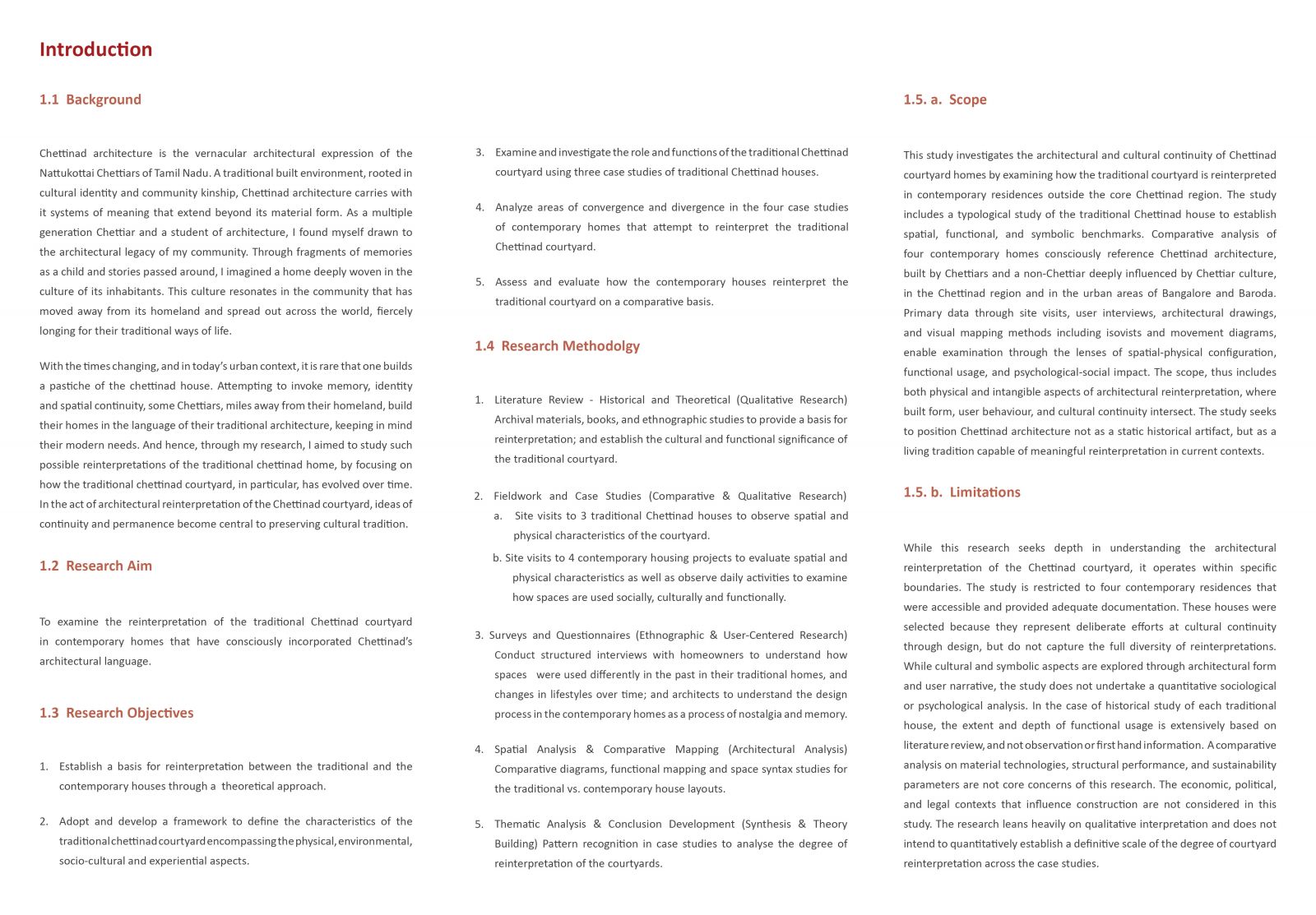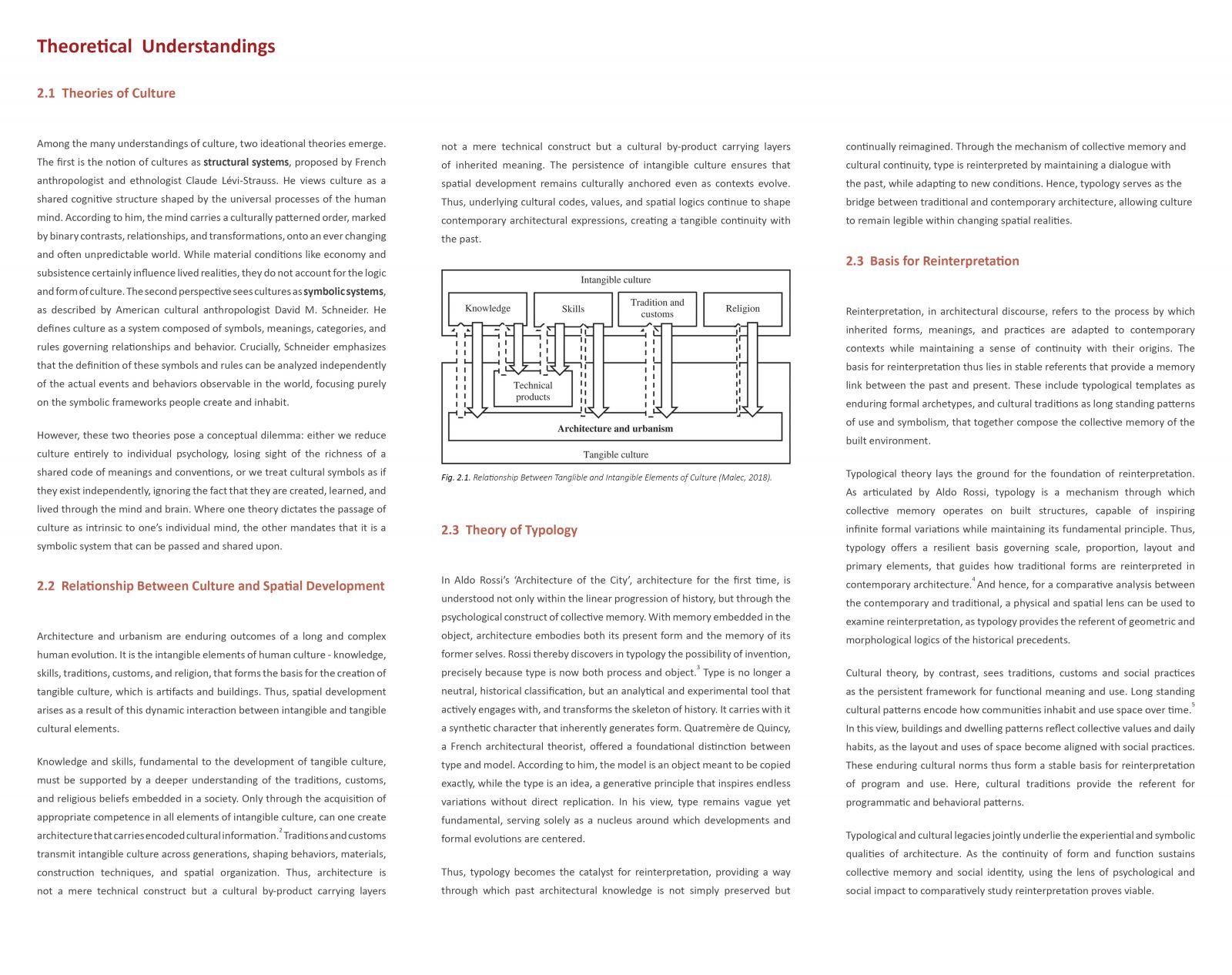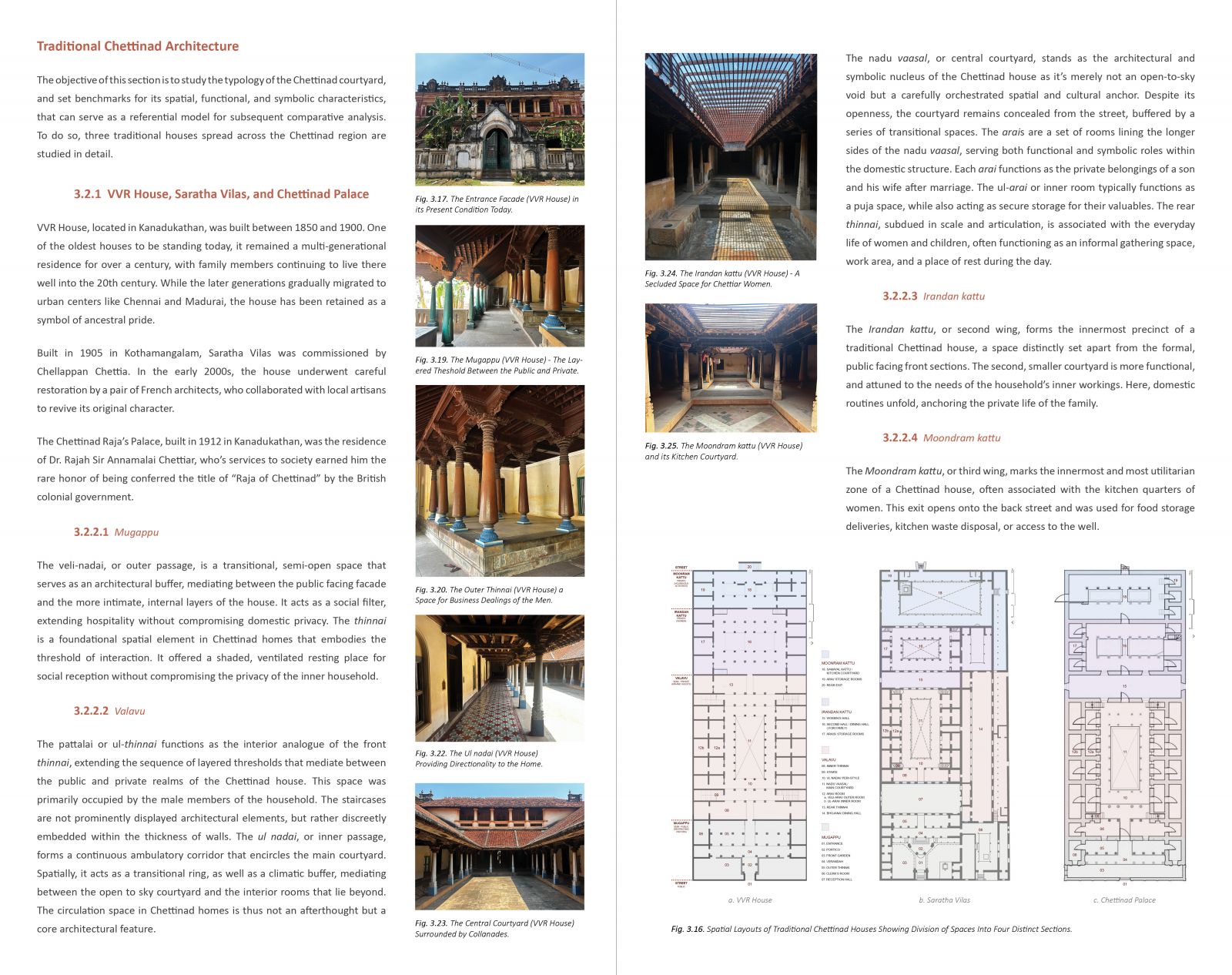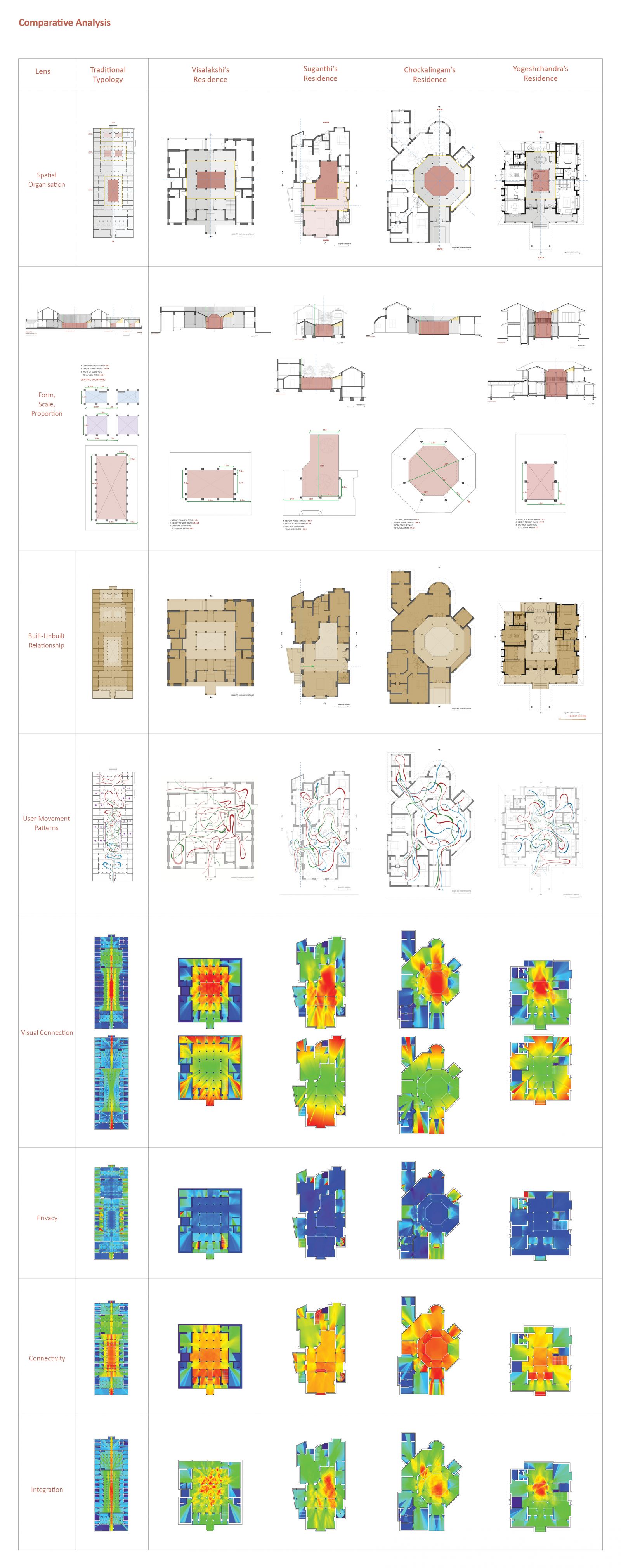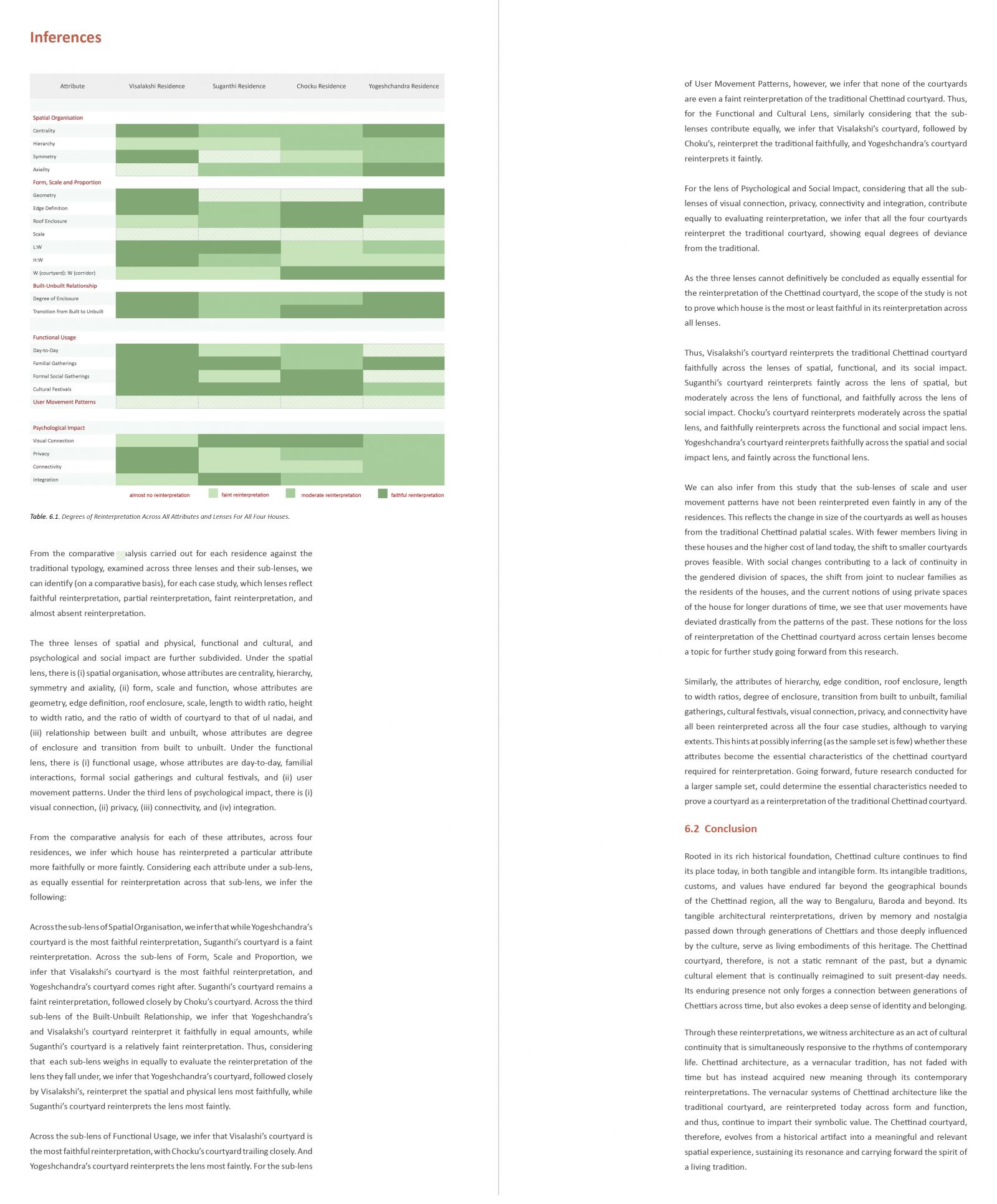Your browser is out-of-date!
For a richer surfing experience on our website, please update your browser. Update my browser now!
For a richer surfing experience on our website, please update your browser. Update my browser now!
All what architecture is today, is a consequence of its past. A discipline shaped by continuity and change, architecture is rooted in history, yet is always adapting to the present reality. According to Aldo Rossi’s writings, it is through memory that one can reinterpret a traditional architectural identity in a different context of time and space, while still preserving its essence. This thesis, thereby, looks at Chettinad architecture, with its culturally rich architectural expression, and examines its reinterpretations in contemporary contexts, to see how its spatial and symbolic elements are retained, adapted, or reimagined. The study looks at three traditional Chettinad houses to define a typological basis that serves as a comparative foundation for analysing four contemporary reinterpretations of Chettinad homes in Karaikudi, Bengaluru and Vadodara. Through lenses of spatial and physical attributes (form, proportion, spatial organisation, built and unbuilt articulation), functional continuity (spatial movement, daily and cultural usage), and socio-psychological impact (privacy, visual connectivity, and integration), the study maps the endurance and evolution of traditional domestic patterns. Through fieldwork, visual mapping, and lived experience narratives, this research traces how the Chettinad courtyard continues to serve as a cultural anchor, depicting that nostalgia and cultural memory find architectural expression even across time and geography.
View Additional Work